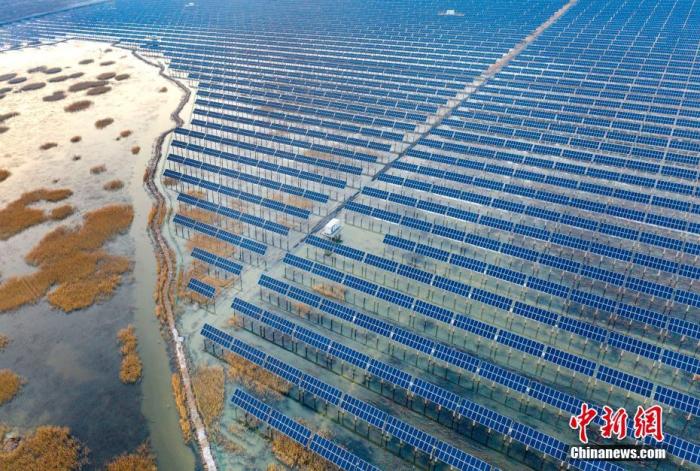China News Service, October 26. According to the Chinese government website, the State Council issued a notice on the 26th to issue the "Carbon Peaking Action Plan by 2030" (hereinafter referred to as the "Action Plan").
The Action Plan clarifies that by 2025, the proportion of non-fossil energy consumption will reach about 20%, energy consumption per unit of GDP will be reduced by 13.5% compared to 2020, and carbon dioxide emissions per unit of GDP will be reduced by 18% compared with 2020. The carbon peak has laid a solid foundation.
Data map: Solar photovoltaic power generation project.
(Drone photo) China News Agency issued Liu Guoxing photo
The "Action Plan" puts forward the following main objectives:
During the "14th Five-Year Plan" period, significant progress has been made in the adjustment and optimization of the industrial structure and energy structure, the energy utilization efficiency of key industries has been greatly improved, the growth of coal consumption has been strictly controlled, the construction of new power systems has been accelerated, and the development, promotion and application of green and low-carbon technologies have made new progress. , Green production and lifestyle have been widely promoted, and the policy system conducive to the development of green and low-carbon recycling has been further improved.
By 2025, the proportion of non-fossil energy consumption will reach about 20%, energy consumption per unit of GDP will be reduced by 13.5% from 2020, and carbon dioxide emissions per unit of GDP will be reduced by 18% from 2020, laying a solid foundation for achieving carbon peaks .
During the "15th Five-Year Plan" period, significant progress has been made in industrial restructuring, a clean, low-carbon, safe and efficient energy system has been initially established, a low-carbon development model in key areas has basically taken shape, the energy utilization efficiency of key energy-consuming industries has reached the international advanced level, and non-fossil energy consumption The proportion has further increased, coal consumption has gradually decreased, key breakthroughs have been made in green and low-carbon technologies, a green lifestyle has become a conscious choice of the public, and the green and low-carbon circular development policy system is basically sound.
By 2030, the proportion of non-fossil energy consumption will reach about 25%, and the carbon dioxide emissions per unit of GDP will be reduced by more than 65% compared with 2005, and the goal of peaking carbon before 2030 will be successfully achieved.

